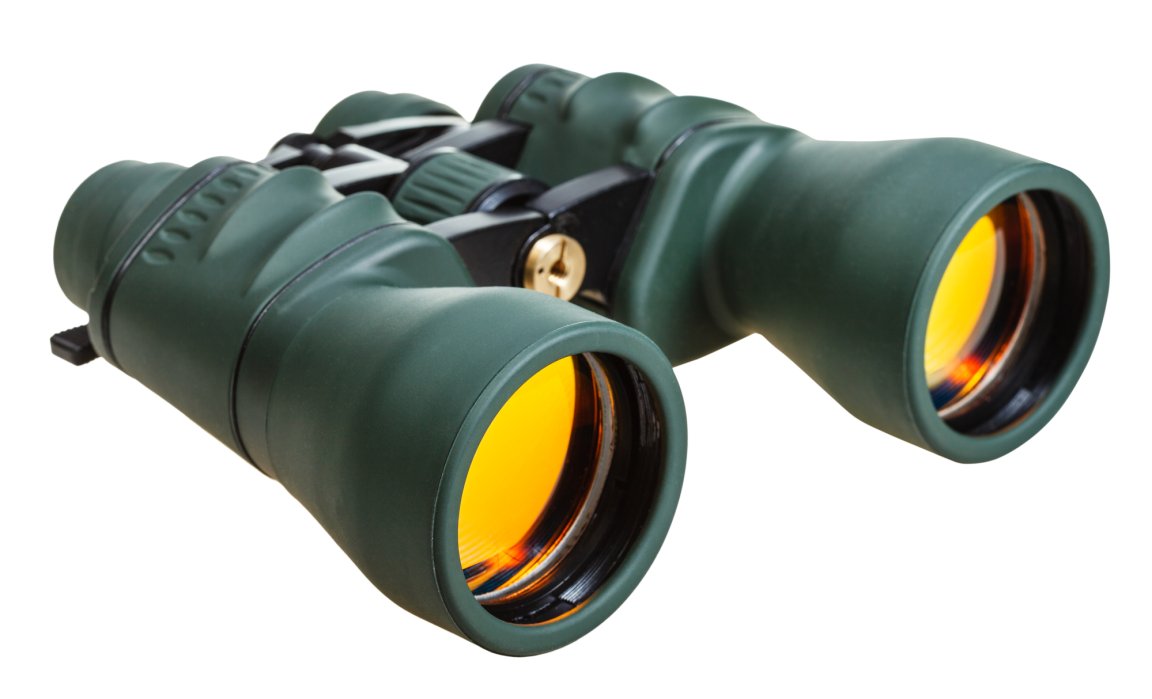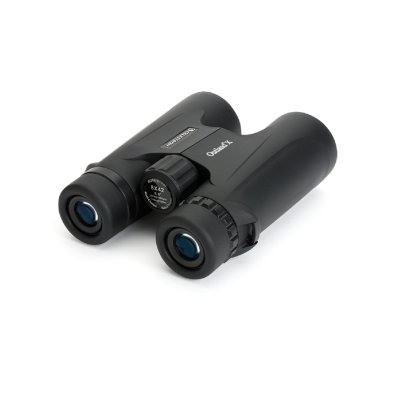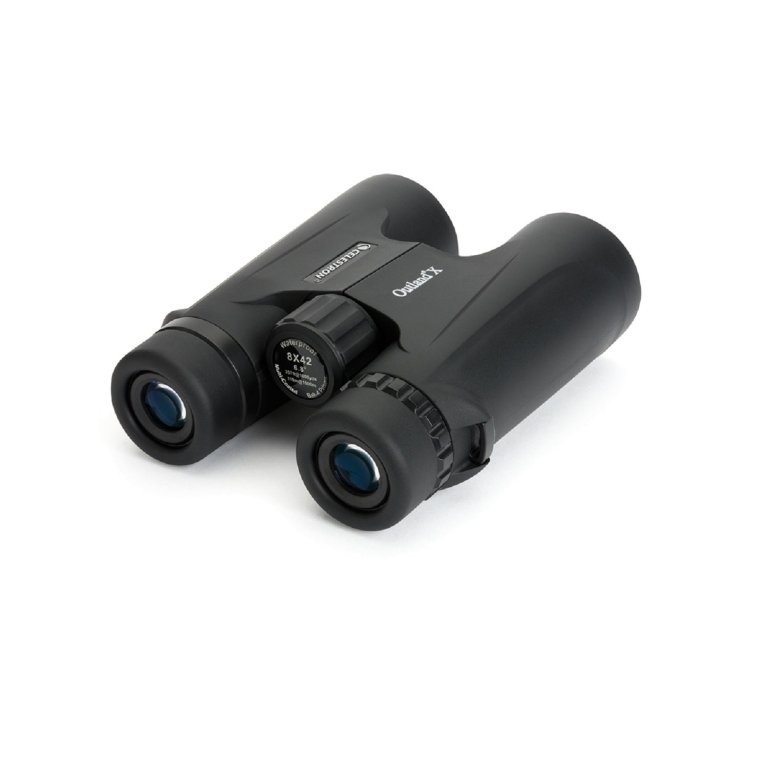
For avid hunters, being able to see a target well before it can see them is a great benefit. And one of the best ways to do so is by choosing a high quality pair of hunting binoculars—preferably with a wide field of view and crystal clear image reproduction (and a waterproof carrying case!) so you spot your prey no matter the weather conditions. We’ve rounded up our top picks and pre-empted some of the most Frequently Asked Questions below to help you make the right decision.
Summary List
- Best Overall: Vortex Optics Diamondback 10×42 Roof Prism Binoculars
- Best Value: Celestron Outland X 8×42 Binoculars
- Honorable Mention: Steiner Optics Predator Series Binoculars
Types of Hunting Binoculars
Porro Prism
This is how binoculars were originally structured: with the light bouncing off two right-angled prisms that are facing each other. The simple design allows the light to follow an uncomplicated route, and this results in sharp, bright images with superb depth perception.
The Porro prism results in a wider field of view and, in general, slightly better image quality than you’ll get with some roof prisms. However, to get everything lined up correctly inside, the eyepiece has to be offset against the objective lens. This usually results in bulkier, heavier binoculars that are difficult to make waterproof.
Roof Prism
Roof prisms are usually arranged in two different ways. The Schmidt-Pecan design involves two prisms separated by a small gap, while the Abbe-Koenig design aligns two prisms into a V shape. Both structures require the light to bounce through many angles before leaving the prism, which extends the overall light path. This allows for better light transmission, resulting in a brighter image.
Because the eyepiece and lens do not have to be offset when using roof prisms, they’re much better for compact binoculars. While these are more durable, a narrow body means a narrow field of view. Roof prism binoculars will often provide better magnification but at the expense of a little clarity.
Best Hunting Binoculars: Reviews & Recommendations
Best Overall
Vortex Optics Diamondback 10×42 Roof Prism Binoculars
Check Latest PriceBest Value
Celestron Outland X 8×42 Binoculars
Check Latest PriceHonorable Mention
Steiner Optics Predator Series Binoculars
Check Latest PriceFinal Thoughts
The rugged Vortex Optics Diamondback 10×42 Binoculars have a mid-range price point and are our overall top pick for the best hunting binoculars.
The compact and popular Celestron Outland X 8×42 Binoculars are, in our opinion, the best hunting binoculars for the money.
Benefits of Hunting Binoculars
- Spotting prey. The whole point of using binoculars for hunting is that you can see prey from far enough away so that it doesn’t see or hear you and, therefore, isn’t inclined to run away.
- Identifying prey. If you’ve got reasonable long-distance eyesight, you’ll probably be able to see the general outline of your prey in the distance but can you identify it? Probably not. That’s where your binoculars come in.
- Terrain assessment. Being able to track your prey is a vital part of hunting and binoculars let you evaluate the terrain and plan the best route to avoid any obstacles before you reach them.
Hunting Binoculars Pricing
- Budget (around $50): It’s possible to pick up serviceable hunting binoculars at this price (if you don’t mind some fogging), but we wouldn’t recommend going any lower. Cheap optics generally make for poor image reproduction.
- Mid-range (between $100 and $500): Hunting binoculars peak noticeably in quality at around the $300 mark, but most pairs in this range will suit most users. You’ll get quality optics with multi-coated lenses more-or-less as standard as well as waterproof and fog proof options and other nice features like HD and ED glass.
- Premium Range ($500 and up): This is where overall image quality starts to even out, and any extra cost can be attributed to features. Super serious hunters can spend thousands on extras like night vision, range finders, laser sighting, and built-in bearing compasses.
Key Features
Magnification
Particularly when it comes to hunting, high magnification is not necessarily better. Sure, you want to be able to see prey clearly from a reasonable distance away, but it’s not Jupiter. The higher the magnification, the more difficult it is to stabilize the image. This makes tracking a moving target almost impossible. Levels of 10x or 8x magnification are generally considered the best for hunting.
Objective Lens
Binoculars are categorized by magnification and objective lens size. A pair of 10×42 binoculars has a magnification factor of 10 and an objective lens diameter of 42mm. The wider the objective lens, the more light it’s possible to capture, and the more light, the brighter the image. With hunting often taking place at dawn or dusk (i.e with low light conditions), you’ll need all the help you can get. The most common lens sizes are 42mm and 50mm, and we certainly wouldn’t recommend going any lower than that.
Field of View
The combination of magnification and objective lens size dictates the field of view. This is how wide the image ends up in your binoculars, and it’s measured in feet over 1,000 yards. The wider the field of view, the more you’ll be able to see. Because hunting involves scanning the horizon, tracking moving objects, and assessing the landscape, a wide field of view is a must-have.
Optics
It’s possible to weigh all the features above and still end up with a disappointing pair of binoculars that are no good for hunting, because the most important feature when it comes to binoculars is the optics quality. Choose Bak-7 or Bak-4 prisms (the latter being marginally better) and fully- and multi-coated lenses. If you can afford additional upgrades like High Definition (HD) and extra-low dispersion glass, then that’s even better.
Other Considerations
- Weight. Whether they’re going to be hanging on your neck strap or safely inside their carrying case, the overall weight of your binoculars is definitely something to take into account. Compact binoculars are lighter than full-size binoculars and may be a good idea if you typically hunt with a lot of gear.
- Durability. Aside from decent waterproofing (which we thoroughly recommend), you want binoculars that will withstand the great outdoors. Some brands are so confident of their ruggedness that they offer lifetime, no-questions-asked guarantees!
- Eye Relief. Here’s another factor to consider if you’re going to spend hours behind your binos scoping out your prey: do they have soft, ergonomic eyecups with long enough eye relief that you can comfortably use them with your regular eyeglasses?
- Tripod Adaptability. If you’re a slow and steady hunter who likes a good stakeout, it might be worth investing in a tripod. In this case, you’ll need a pair of hunting binoculars with a suitable tripod adapter.
- Stealth. Is it important that you’re neither seen nor heard when you’re hunting? Consider paying extra for noise reduced binoculars or those with a camouflaged outer case.
Tips
- To determine the exit pupil of your binoculars or the overall brightness of the lenses, divide the magnification factor by the objective lens size.
- If you wear glasses, you may want to get binoculars with larger eyecups. This will offer eye relief to make viewing more comfortable.
- Determine how far you have to travel in order to hunt or set up base camp. Binoculars can be heavy and uncomfortable to carry via a neck strap. Store them in a bag or their carrying case until you get to where you are going.
FAQs
A: Check with the manufacturer to make sure the binoculars have a tripod connection on them. You may be able to purchase a specific attachment if they do not have one. However, the majority should allow you to connect them with a tripod for a sturdier image.
A: The number after the x describes the lens diameter of a pair of binoculars in millimeters. The bigger the lens size, the better the light transmission for bright images. Keep in mind that wider objective lenses will also increase the weight of the binoculars.
A: Lenses and the internal optics in a pair of binoculars are usually coated to prevent the scattering of light, improve light transmission and reduce chromatic aberration, amongst other things. The more lens coatings, the better the overall image reproduction will be.





